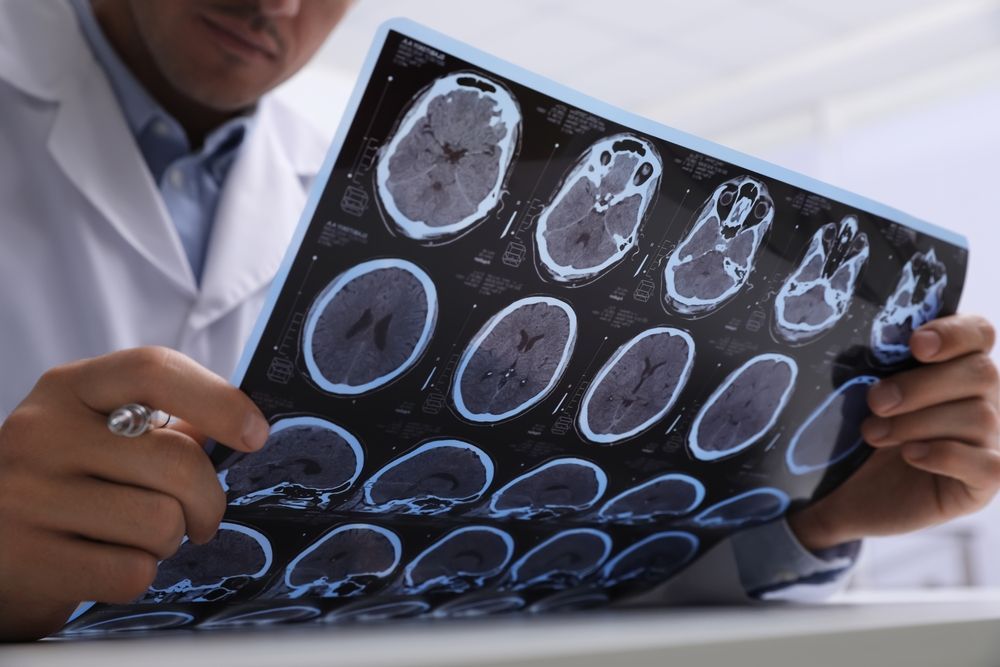Is Driving With Headphones Illegal in Atlanta, GA?
A Complete Guide for Georgia Drivers
If you live in Atlanta, you know how busy the roads can be. Between dense traffic on the connector, fast-moving interstates, packed city streets, and endless noise, many drivers want a quieter or clearer way to listen to music, calls, or navigation. Because of that, a common question comes up for Georgia drivers: is driving with headphones illegal?
You may see people on I-285 wearing large headphones, or you might notice a driver in Midtown with earbuds in both ears. The behavior is common, especially for people who want better sound quality or who commute long distances. But Georgia has specific rules on this issue, and police officers in Atlanta take these rules seriously due to the high rate of distracted driving crashes across the region.
This article breaks down everything you need to know about driving with headphones in Georgia. You will learn when it is illegal, when it is legal, how Atlanta police respond to headphone use, and why the law exists in the first place. The goal is to help you understand the rules in clear, simple language so you can avoid tickets, reduce distraction, and stay safe on Atlanta’s busy roads.
Is Driving With Headphones Illegal in Georgia?
Yes.
In Georgia, it is illegal to drive while wearing headphones or earbuds in both ears.
This rule applies throughout the state, including Atlanta, Sandy Springs, Roswell, Decatur, Marietta, and all surrounding counties.
Georgia law treats headphones as a distraction that blocks a driver’s ability to hear essential sounds on the road. These include police sirens, ambulance signals, fire trucks, car horns, and other audio cues that help prevent car accidents.
The law applies to:
- Over-ear headphones
- In-ear earbuds
- Wireless Bluetooth earbuds
- Wired headphones
- Headsets that cover both ears
If the device blocks both ears, it violates Georgia law.
The state’s position is firm: driving requires full awareness, and sound awareness is part of safe driving behavior.
Why Georgia Bans Headphones for Drivers
Georgia’s roads are fast, crowded, and unpredictable. Atlanta alone sees thousands of crashes every year, and distracted driving is one of the leading causes. Because of this, lawmakers took steps to reduce distractions that impair awareness.
When asking is driving with headphones illegal, it helps to understand why the rule matters:
Emergency Vehicles in Metro Atlanta Need Clear Roads
Sirens must be heard quickly on crowded highways such as I-75, I-85, and I-285. Headphones can delay reaction time when an emergency vehicle approaches.
Heavy Traffic Requires Strong Awareness
Drivers in Atlanta often make sudden lane changes, quick turns, or abrupt stops. Hearing nearby cars helps prevent collisions.
Pedestrian and Cyclist Activity Is High in the City
Places like Midtown, Downtown, and Buckhead have heavy foot traffic. Drivers must detect sounds from pedestrians, scooters, and bikes.
Distracted Driving is a Major Safety Concern in Georgia
The state already enforces strong hands-free laws. Headphones fall under the same safety goals—reduce distraction, improve awareness, and prevent injury.
Georgia’s approach is simple: if a device blocks a driver’s hearing, it creates risk.
Is Driving With One Earbud Legal in Georgia?
Yes.
Georgia allows the use of
one earbud only.
The other ear must remain completely uncovered.
With one ear open, the driver can still hear emergency vehicles, horns, and environmental sounds. But using both earbuds at once counts as a violation.
This means:
- One Bluetooth earbud is legal
- Two Bluetooth earbuds are illegal
- One wired earbud is legal
- Two wired earbuds are illegal
- One side of a headset is legal
- Both sides covering the ears is illegal
Even though one earbud is allowed, officers may still issue citations if the device distracts you or affects your awareness.
Does Volume Affect the Law in Georgia?
No.
Volume does not change legality.
Even if you use low volume, wearing headphones in
both ears is still illegal.
Georgia’s rule focuses on whether your ears are blocked, not how loud the device is.
How Atlanta Police Enforce the Headphone Law
Drivers throughout Atlanta report consistent enforcement of this law, especially in high-traffic areas.
Atlanta police may pull you over if they see:
- Headphones covering both ears
- Earbuds in both ears
- A headset that blocks both ears
- A driver showing signs of distraction due to audio devices
Police in areas such as Buckhead, Midtown, Downtown, Sandy Springs, and along major routes like Peachtree Street often monitor drivers closely because of heavy congestion and frequent emergency vehicle traffic.
Can You Get a Ticket for Wearing Headphones While Driving in Georgia?
Yes.
Driving with headphones in both ears can lead to a citation.
The ticket may involve a fine and may count as a moving violation depending on circumstances.
Officers may issue tickets under:
- Driving with headphones that block both ears
- Distracted driving
- Failure to maintain lane
- Unsafe driving behavior
- Hands-free law violations if the device is used for calls
If headphones contributed to any unsafe action, the charges may be more serious.
Why Some Atlanta Drivers Still Wear Headphones
Despite the law, you may still see drivers wearing headphones. Common reasons include:
Noise Reduction
Atlanta roads can be loud. Drivers try to block noise from traffic, construction, and city activity.
Better Audio Quality
Some people feel headphones offer clearer sound than older car speakers.
Phone Calls on Long Commutes
Drivers traveling across the metro area may use earbuds for work-related calls.
Navigation
Some drivers like clearer audio directions when navigating complex Atlanta interchanges.
Privacy
Drivers may prefer private audio instead of broadcasting sound through the car.
But these reasons do not change the law. Georgia still requires drivers to keep at least one ear open.
Headphones vs. Earbuds vs. Bone-Conduction Devices in Georgia
Not all devices are treated the same. Georgia’s law focuses on whether the ears remain open.
Over-Ear Headphones
These fully cover the ear and are illegal if both ears are covered.
Earbuds
Earbuds block the ear canal. One is legal. Two are illegal.
Bone-Conduction Headsets
These rest on the cheekbone and leave the ear canal open.
Most interpretations suggest they are legal because they do not block the ears, but officers may still evaluate distraction based on behavior.
In-Car Speakers
Always legal as long as the volume is reasonable.
Drivers should use caution. Even if a device is technically allowed, distraction can still lead to a citation under general safety laws.
Safety Risks of Wearing Headphones While Driving in Atlanta
Traffic in Atlanta moves fast and often shifts without warning. Wearing headphones reduces your ability to respond.
Key risks include:
Delayed Response to Emergency Vehicles
Sirens often appear behind you with little warning. Headphones can cause dangerous delays.
Reduced Awareness of Fast Lane Changes
Atlanta drivers frequently shift lanes without signaling. Sounds help you detect sudden movement.
Road Noise Matters for Safety
You know when someone is in your blind spot because you hear them. Headphones block these cues.
Cognitive Distraction
Listening through headphones can demand more attention than listening through car speakers.
Tunnel Effect
Headphones isolate you from the driving environment, which is unsafe in dense traffic.
These risks explain why Georgia regulates headphone use for drivers.
Driving With Headphones and Hands-Free Laws in Georgia
Some drivers mistakenly assume that hands-free laws allow headphone use.
But Georgia separates the two issues.
- Hands-free laws regulate phone handling.
- Headphone laws regulate ear obstruction.
A device may be legal under hands-free rules but illegal under headphone rules if it blocks both ears.
Does the Headphone Law Apply to Motorcycles and Bicycles in Georgia?
Yes.
Motorcyclists and bicyclists must also follow the one-ear rule.
Motorcycle riders especially need clear awareness of sirens, engines, and traffic sounds on busy Atlanta roads.
Many cities within the metro area have additional safety rules for bikes and scooters, and officers may cite riders if headphone use creates a hazard.
What About Drivers With Hearing Loss?
People with hearing impairments may use assistive devices, but these devices must not block both ears like full headphones.
Hearing aids are allowed.
However, any device that acts like a headphone still falls under the same restrictions.
Drivers with hearing loss should keep documentation for medical devices in their vehicle if the device resembles a headset.
Can You Fight a Headphone Ticket in Georgia?
Yes, you may fight a citation. Reasons to contest include:
- You wore only one earbud
- Your device was bone-conduction
- The officer misinterpreted the device
- Your ear was not blocked
- You were stopped due to a misunderstanding
However, if the device clearly covered both ears, fighting the ticket may be difficult.
Safer Audio Alternatives for Atlanta Drivers
If you want clear audio without risking a citation or causing distraction, consider these options:
Use the Car Stereo or Bluetooth System
Most cars in Atlanta have Bluetooth. This keeps your ears open.
Use One Earbud Only
Legal and safer than two earbuds.
Use Bone-Conduction Devices
These allow full environmental sound.
Use a Phone Mount + Speaker Mode
Your phone can play directions through its speaker while mounted safely.
Upgrade Car Speakers
Better sound reduces the urge to use headphones.
These options improve safety while keeping you within Georgia’s laws.
How Headphones Affect Car Accidents in Atlanta
Accident investigators look for distraction indicators.
Headphone use may be listed as a contributing factor when:
- The driver failed to hear a horn
- The driver did not notice an emergency vehicle
- The driver drifted between lanes
- The driver reacted slowly
- The driver failed to yield
Insurance companies may reduce compensation if headphone use contributed to the crash.
Summary: Is Driving With Headphones Illegal in Atlanta, GA?
Here is the clear answer:
- Wearing headphones or earbuds in both ears is illegal in Georgia.
- One earbud only is legal.
- Volume does not affect legality.
- Police enforce this law throughout Atlanta.
- General distracted driving laws may still apply even with one ear free.
- The goal is road safety, awareness, and reduced distraction.
Even if the law allowed headphones, Atlanta’s dense traffic makes awareness important. Driving without blocking your ears creates a safer environment for you and others on the road.
Conclusion
Driving in Atlanta comes with constant movement, loud noise, and unpredictable traffic patterns. With so much happening at once, keeping your ears open is essential. The question “is driving with headphones illegal?” has a clear answer in Georgia: you cannot drive with both ears covered.
Whether you are heading through Midtown, taking I-75 to work, driving across the Perimeter, or commuting from the suburbs into the city, staying alert helps prevent accidents. Use in-car audio, keep at least one ear open, and avoid wearing headphones behind the wheel. You will stay legal, stay safer, and stay better prepared for whatever Atlanta traffic sends your way.



